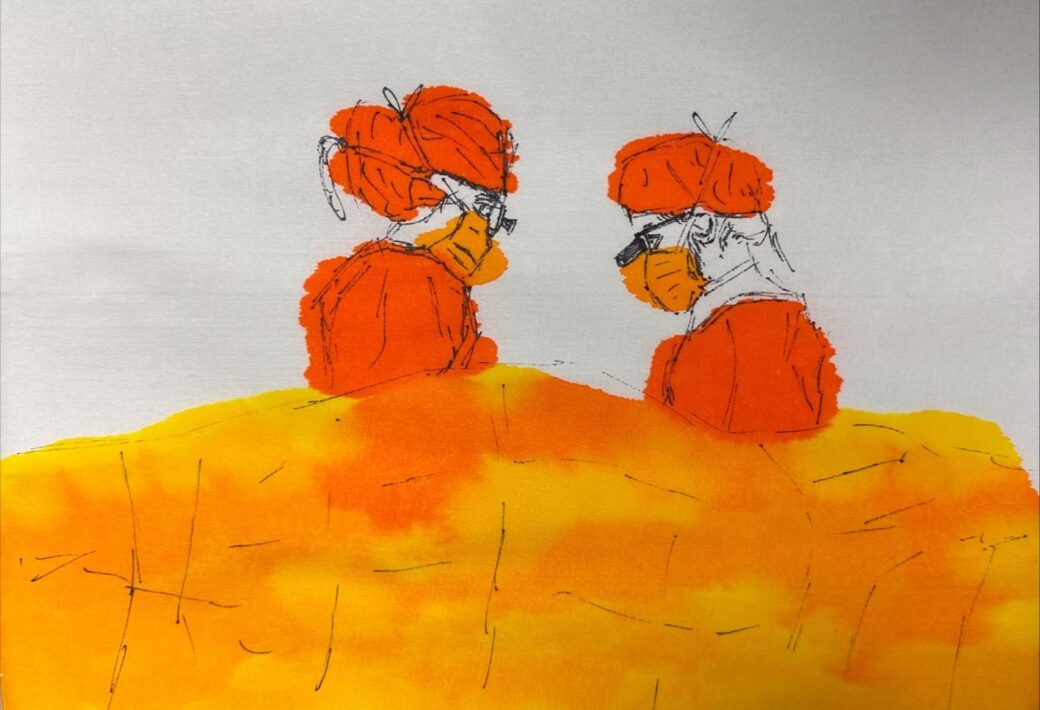CSA celebrates National Anesthesiologists Week. To toot our own horns, anesthesiologists are key linchpins in the Perioperative as well as healthcare processes of California. We are clinicians, researchers, and advocates.
We have solicited essays celebrating the identity of Anesthesiologists from people in different stages of their careers; medical student aspiring to be an Anesthesiologist, residents, and esteemed faculty and national leaders.
We hope you enjoy reading these essays as they encompass the spirit of the specialty.
Rita Agarwal, MD, FAAP, FASA
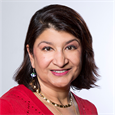
Happy Physician Anesthesiologists Week! This is the 11th time that the American Society of Anesthesiologists and the California Society of Anesthesiologists have celebrated the incredible dedication that anesthesiologists have for patient safety and patient advocacy.
Anesthesiology is now ranked among the most highly desired specialties by medical students entering the NRMP Match with close to 100% fill rates. Not only do we care for patients in the operating room, but we also improve outcomes in acute, chronic, palliative, and transitional pain, intensive care units and sedation suites. We were the first medical organization to create a society dedicated solely to patient safety, the American Patient Safety Foundation, and have dedicated significant resources to trying to understand why complications occur and how to prevent them. We create and investigate new innovations and are responsible for some of the most important advances in medicine, like the Apgar Score, the new Maternal Risk Score, and Pulse oximetry to name a few.
I asked Microsoft co-pilot why anesthesiology is the best specialty, and this is what it said.
Anesthesiology is often hailed as a fantastic specialty for several reasons:
1. Critical Role in Patient Care: Anesthesiologists play a crucial role in surgeries and other medical procedures, ensuring patients are pain-free and stable. They’re the unseen guardians of the operating room, making surgeries safe and comfortable.
2. Diverse Skill Set: Anesthesiology combines knowledge of pharmacology, physiology, anatomy, neurobiology, chemistry, physics, and critical care. Anesthesiologists are skilled in managing a wide variety of medical situations, from routine surgeries to emergencies.
3. Work-Life Balance: Many anesthesiologists report having a good work-life balance compared to some other medical specialties. While there are certainly high-demand periods, there are also opportunities for flexible schedules.
4. High Demand and Competitive Salary: Anesthesiologists are in high demand across the healthcare industry, and the specialty is known for its competitive salaries. This financial stability can be a significant draw.
5. Variety of Subspecialties: Within anesthesiology, there are various subspecialties such as pain management, pediatric anesthesiology, critical care medicine and so many more. This allows for further specialization and the ability to focus on areas of personal interest.
6. Intellectual Challenge: Anesthesiology requires quick decision-making, attention to detail, and constant monitoring of patients. It’s intellectually stimulating and rewarding for those who enjoy problem-solving.
There is a lot more, but I thought this was a good starting summary. In addition to the comments above I wanted to share what a celebration of anesthesiologists means to me.
As a pediatric anesthesiologist and pain specialist who has dedicated over 30 years to this specialty, it is an honor to have our amazing field recognized. We are so often the people behind the masks who keeps patients alive and comfortable, while surgeons and proceduralist cause severe disturbances in their physiology. We are rarely recognized in the same way our colleagues are. How many articles have we all seen lauding the efforts of different specialties who are providing cutting edge care, without any mention of the anesthesiologists who help make it all possible by safely anesthetizing patients, in sometimes very challenging circumstances? The neurosurgeon trying some new approach to a tumor resection, the transplant surgeons attempting new multi-visceral organ transplants, or the cardiac surgeons performing a new surgery. None of which would be possible without anesthesiologists and the constant advances we make to improve safety and feasibility of these procedures in often very sick patients. Anesthesiologists are at the forefront of improving pain management, decreasing unnecessary opioid use and perioperative mortality and complications. The new frontiers in EEG monitoring in the OR and ICUs for even the youngest children, the work on the neurodevelopmental effects of anesthesia on the developing brain or its effects on delirium, the various registries such as Difficult Airway management (PedIR) , craniofacial reconstruction, morbidity and mortality of children undergoing general anesthesia (Wake Up Safe) and sedation ( Pediatric Sedation Research Consortium) are just a few examples of work that anesthesiologists have done to improve outcome in children.
I am incredibly proud to be a member of the CSA, who despite pressure from all sides always advocates for the safest possible patient care.
What do you think makes the field of anesthesiology great?
Pilgrimage to Meet the Alchemists – Juan Liuzzi Stamerra, MD
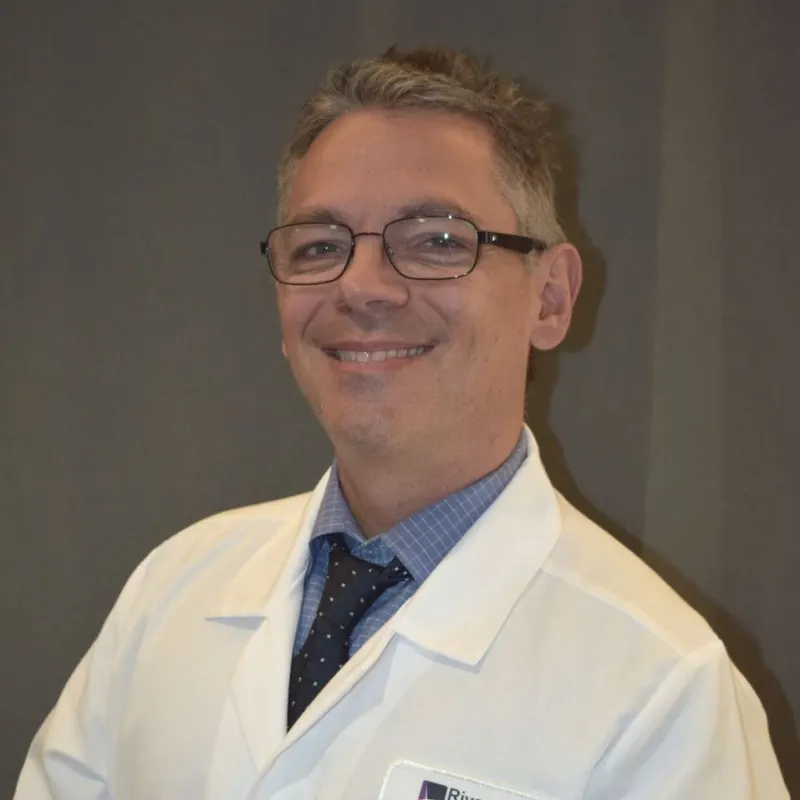
My journey began in middle school when I decided to become a doctor—a choice no one in my family understood, as I would be my family’s first physician. After years of studying at one of Venezuela’s top universities and overcoming challenges, I graduated.
Specializing in General Surgery and Oncology, with a focus on head and neck surgery, brought immense fulfillment. Working at a leading oncology hospital, mentoring residents and medical students, and conducting research enriched my career. Alongside a happy marriage and two children, I felt life was on the perfect path. However, Venezuela’s political and economic instability, marked by food shortages, frequent power outages, and insecurity, forced me to seek a better future. In 2016, after obtaining an EB1 visa, I moved to the U.S to start afresh.
Adapting to a new language and culture was challenging. Initially working as a medical assistant distanced me from the operating room, but I soon transitioned to a surgical assistant role. There, I learned invaluable lessons from surgeons and anesthesiologists, which reshaped my perspective and inspired my transition to anesthesiology.
After passing all the steps on the first attempt, I secured an anesthesiology residency in Florida. However, two years in, the program was closed, opening a new opportunity to join the recently expanded residency at RUHS. Moving to California without my family was a significant sacrifice. Starting as a CA-2 in a Level 1 trauma center with rotations at the nation’s top hospitals, was awe-inspiring as I reflected on the formidable journey that allowed me to work with some of the country’s best anesthesiologists.
Now, as I approach the completion of my anesthesiology training, I feel deeply grateful. Securing an anesthesiology residency position as a foreign-trained physician, many years after graduating, is truly a blessing shaped by the support of my faith, family and incredible mentors. I hope my story serves as an example of perseverance, dedication, and resilience, that inspires other doctors who, like me, believe that with passion and determination, no goal is unattainable, and any obstacle can be overcome with a positive mindset.

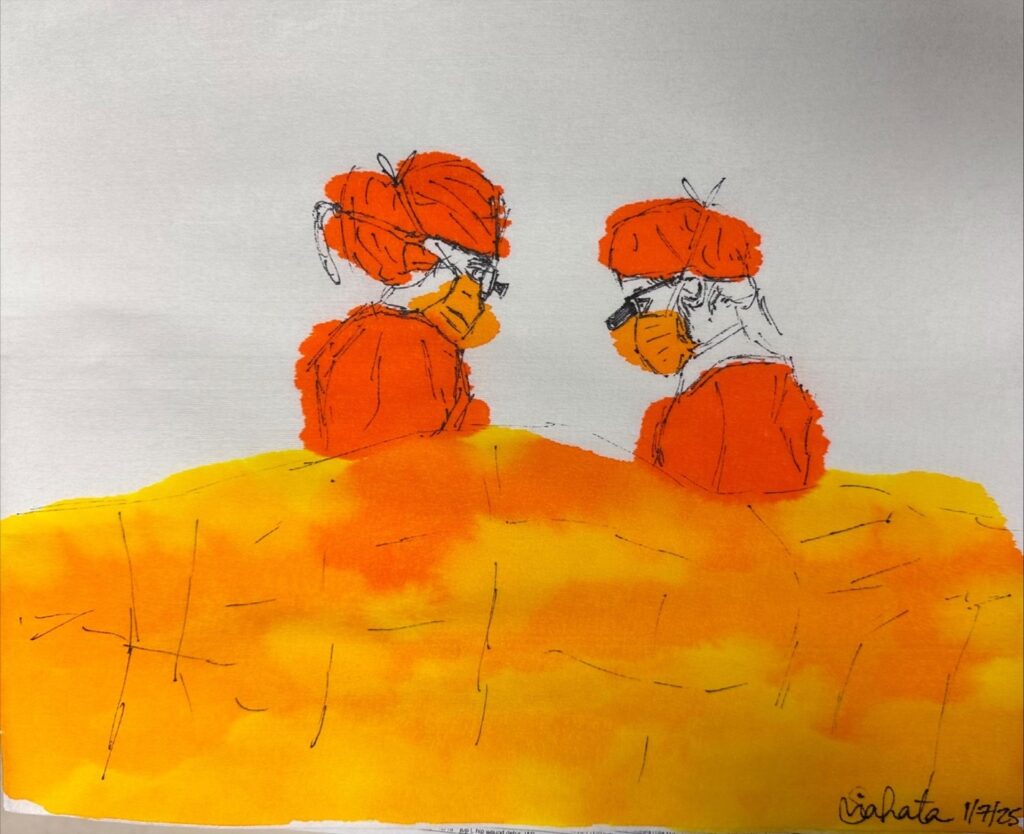
Fluorescein Prisms – Sumana Mahata, MD
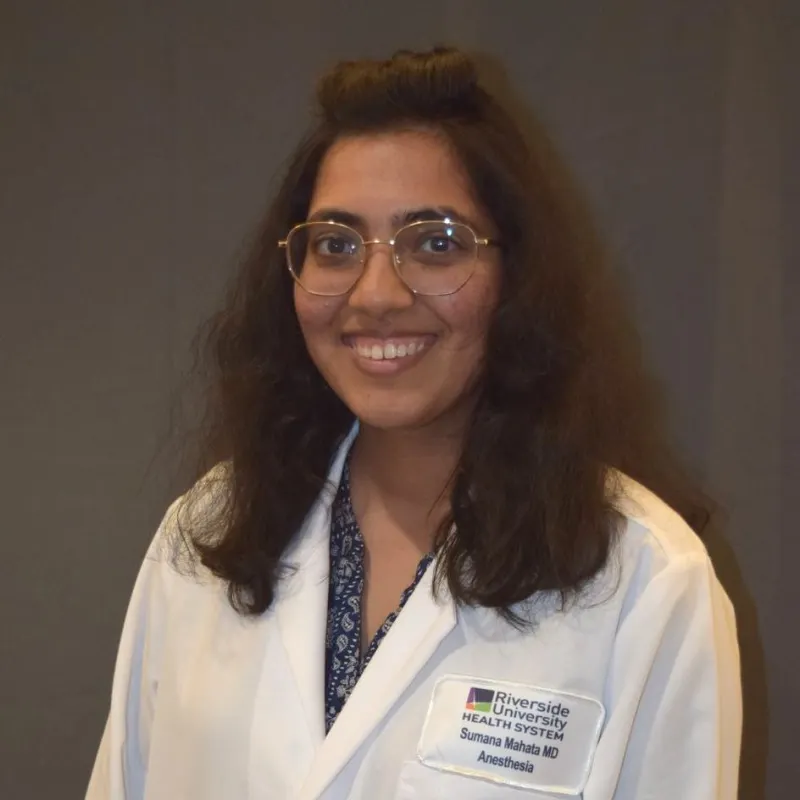
Anesthesiologists are intensely curious allowing innovation in all aspects from research to communication to patient safety. I recently discovered the properties of dyes that we use during surgery. Fluorescein changes colors with dilutions and behaves like watercolor; methylene blue is a rich color that sometimes precipitates and does not spread well; and indocyanine green on paper is rich, regal hue that fades over time. It has taken months to become competent enough to use these dyes for artwork, communicating my appreciation for my colleagues by creating art for them similar to this sketch of Juan Liuzzi relieving a patient’s excruciating cancer pain with the magic of needles and local anesthetic. Other artwork captures anesthesiologists placing central lines, inserting double-lumen endotracheal tubes with fiberoptic scopes, and even making glove animals to make patients smile. Our role has limitless potential to meet future healthcare challenges driven by our curiosity, empathy, intuition and sizable medical knowledge, and I am deeply honored to hone the skills necessary for future anesthesiology victories in patient care.
Anika Sinha, UC San Diego Third-Year Medical Student
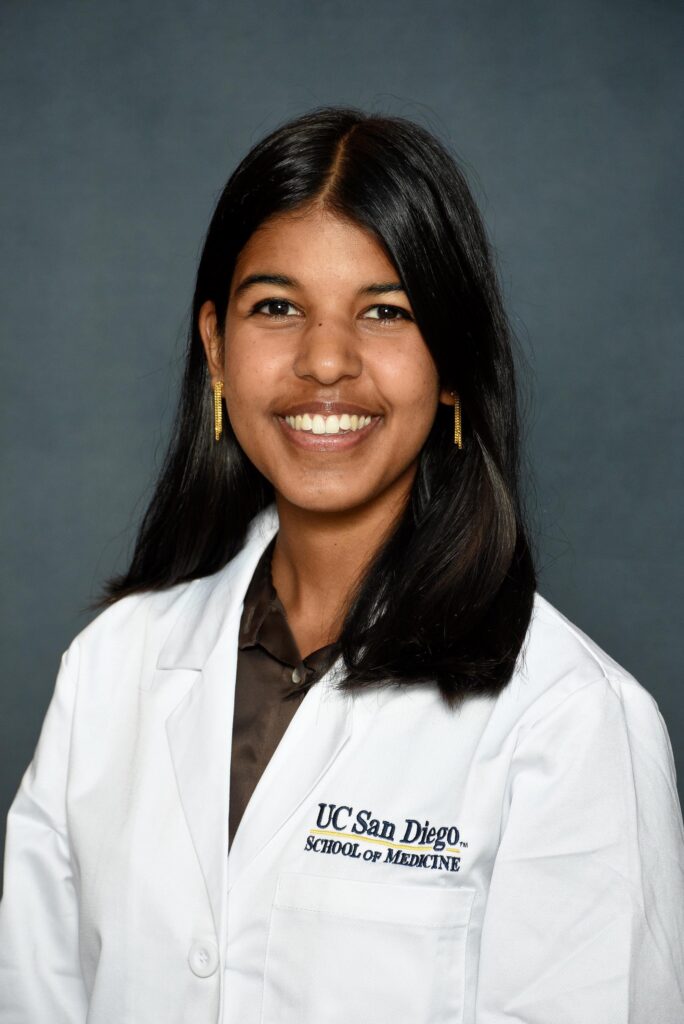
As a third-year medical student at UC San Diego, I have found my place in the field of anesthesiology—a specialty that blends my interests in procedural medicine, pharmacology, and patient-centered care. It’s exciting for me to think that I get to be part of the CSA’s celebration of National Anesthesiologists’ Week. The opportunity to comfort patients in their most vulnerable moments before surgery resonates with my desire to make meaningful connections while having an immediate impact on patient care. Whether ensuring a smooth induction of anesthesia or managing a crisis in the operating room, anesthesiology offers a dynamic environment that will challenge me to remain calm and adaptable.
I look back fondly on my first time shadowing an anesthesia resident in my first year of medical school. A former bartender, he drew fascinating parallels between his past and current careers: both requiring the ability to multitask, stay alert, and anticipate responses in high-pressure environments. Fast forward a few years later, I recently completed a two-week anesthesia elective during my third-year rotations. I was thrilled on my final day of the elective when my resident trusted me to come in early and set up the room myself. The night before, I flipped through my little pink notebook full of notes and scribbles I took during the rotation. I came extra early, mentally running through my “MS MAID” mnemonic and triple checking that the suction, monitor, ET tube, medications, and IV bags were set up. That morning, I truly had felt an exciting sense of independence that I hope to continue experiencing in the OR as a physician. It’s a privilege that I am eagerly anticipating!
Beyond the clinical setting, I am staying engaged with Anesthesiology via medical education initiatives. I am involved with UCSD Simulation Center, where I help design procedural curricula for third-year medical students, particularly for skills in IV access, intubation, and ultrasound-guided techniques. Additionally, I led a project analyzing the efficacy of a UCSD-developed regional anesthesia education program that was implemented and delivered to anesthesia residents in Mozambique. It has been inspiring to see the global efforts to improve patient care through anesthesia advancements, and I hope to continue global collaborations during my residency years.
Equally important is my commitment to inspiring the next generation of physicians, particularly those from underrepresented backgrounds. As one of the organizers of the Doctors Back to School (DBTS) program through the ASA Committee on Professional Diversity, I have helped run hands-on workshops at middle schools during ASA national conferences and have launched the first DBTS at a San Diego middle school. We teach 8th graders how to perform CPR, intubate a mannequin, place an epidural, and how to use ultrasound to visualize the heart. Seeing the excitement in these students as they learn topics in anesthesia encourages me to continue fostering inclusivity and accessibility within medicine.
With every patient interaction, procedure, and community engagement, I am reminded of the power and privilege it is to guide someone safely through some of their most critical and vulnerable moments. I look forward to growing within this field and making meaningful contributions as a future anesthesiologist. Happy National Anesthesiologists Week!

